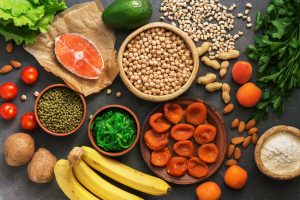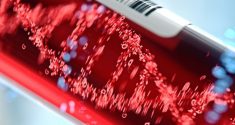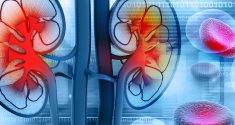Along with sodium and chloride, potassium is one of the body’s most important electrolytes. This essential element is involved in the transmission of nerve impulses, the regulation of blood pressure and plays a crucial role in healthy heart function. Smaller amounts of the substance are found in liver cells, bone cells and red blood cells. The mysteries of circadian rhythms in red blood cells have been unraveled by researchers who have also identified potassium as the key to solving the mystery.
Potassium and Circadian Rhythm in Red Blood Cells
An innovative study from the University of Surrey and Cambridge’s MRC Laboratory of Molecular Biology, published in the journal Nature Communications, has unraveled the mysteries of circadian rhythms in red blood cells and identified potassium as key to solving the mystery. Red blood cells, like other cells in the body, have a 24-hour biological clock (circadian rhythms) that change their activity between day and night. Unlike other cells, red blood cells have no DNA and the “clock genes” that control the rhythm are absent.
Using a novel technique called dielectrophoresis and new technology developed at the University of Surrey, researchers were able to study the electrochemical properties of human red blood cells and provide an in-depth analysis of how they work. The researchers observed a significant variation in potassium levels in cells that corresponded to the circadian rhythm; increased levels during the day followed by a decrease at night.
Time of Day of Heart Attacks

This discovery provides a unique insight into how the membrane physiology of red blood cells and their clockwork work – with ion transport appearing to be of particular importance. Studying the circadian rhythms in red blood cells is helpful, among other things, in understanding when and why heart attacks usually occur in the morning.
A Diet Rich in Potassium Lowers Blood Pressure
It is well known that high salt consumption is associated with increased blood pressure and an increased risk of heart attacks and strokes. Potassium helps the body to eliminate more sodium in the urine. According to a study published in the European Heart Journal, a journal of the European Society of Cardiology (ESC), women who eat bananas, avocados and salmon could reduce the negative effects of dietary salt. The study found that a diet high in potassium was associated with lower blood pressure, particularly in women with high salt intake.
The study included 24,963 participants (11,267 males and 13,696 females) from the EPIC-Norfolk study, which recruited 40- to 79-year-olds from general practice in Norfolk, UK, between 1993 and 1997. The mean age was 59 years for men and 58 years for women. Participants completed a lifestyle questionnaire, blood pressure was measured, and a urine sample was taken. Sodium and potassium in urine were used to estimate food intake. Participants were divided into tertiles according to their sodium intake (low/medium/high) and potassium intake (low/medium/high).
Researchers analyzed the association between potassium intake and blood pressure after adjusting for age, gender, and sodium intake. Potassium consumption (in grams per day) was associated with blood pressure in women – blood pressure fell as intake increased. When analyzing the association by sodium intake (low/moderate/high), the relationship between potassium and blood pressure was observed only in women with high sodium intake, where every 1 gram increase in daily potassium was associated with a 2.4 mmHg lower systolic blood pressure. In men, there was no association between potassium and blood pressure.
Women Benefit More than Men
During a median follow-up of 19.5 years, 13,596 (55%) participants were hospitalized or died from cardiovascular disease. Researchers analyzed the association between potassium intake and cardiovascular events after adjusting for age, sex, body mass index, sodium intake, use of lipid-lowering drugs, smoking, alcohol intake, diabetes, and prior heart attack or stroke. In the overall cohort, those in the highest tertile of potassium intake had a 13% reduced risk of cardiovascular events compared to those in the lowest tertile. When men and women were analyzed separately, the corresponding risk reduction was 7 and 11%, respectively. The amount of salt in the diet did not affect the relationship between potassium and cardiovascular events in men or women.
The results suggest that potassium helps to maintain heart health, but that women benefit more than men. The relationship between potassium and cardiovascular events was the same regardless of salt intake, suggesting that potassium also has other ways of protecting the heart.
The World Health Organization recommends that adults consume at least 3.5 grams of potassium and less than 2 grams of sodium (5 grams of salt) per day. Foods high in potassium include vegetables, fruits, nuts, beans, dairy products and fish. For example, a 115-gram banana contains 375 mg of potassium, 154 grams of cooked salmon contains 780 mg, a 136-gram potato contains 500 mg, and 1 cup of milk contains 375 mg.
The results show that a heart-healthy diet goes beyond limiting salt and increases potassium. Food companies could help by replacing traditional sodium-based salt in processed foods with an alternative to potassium salt. In addition, fresh, unprocessed foods should be preferred as they are both high in potassium and low in salt.








